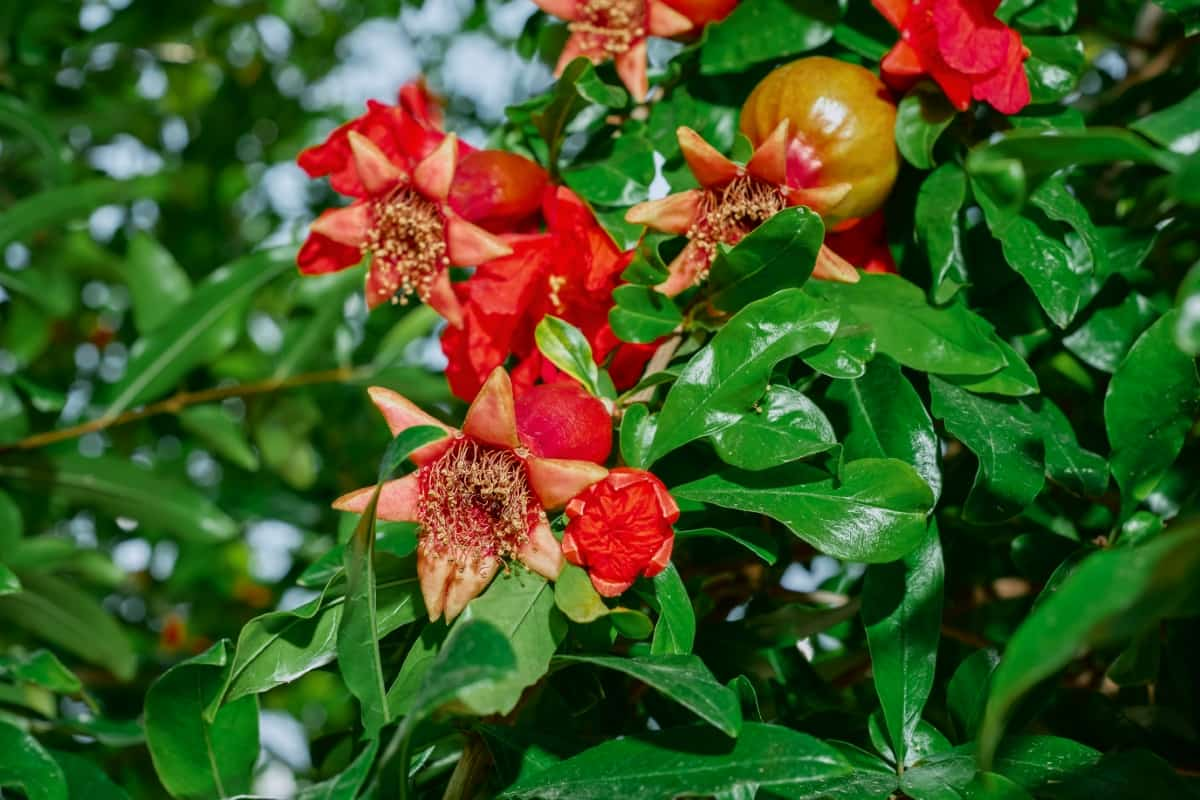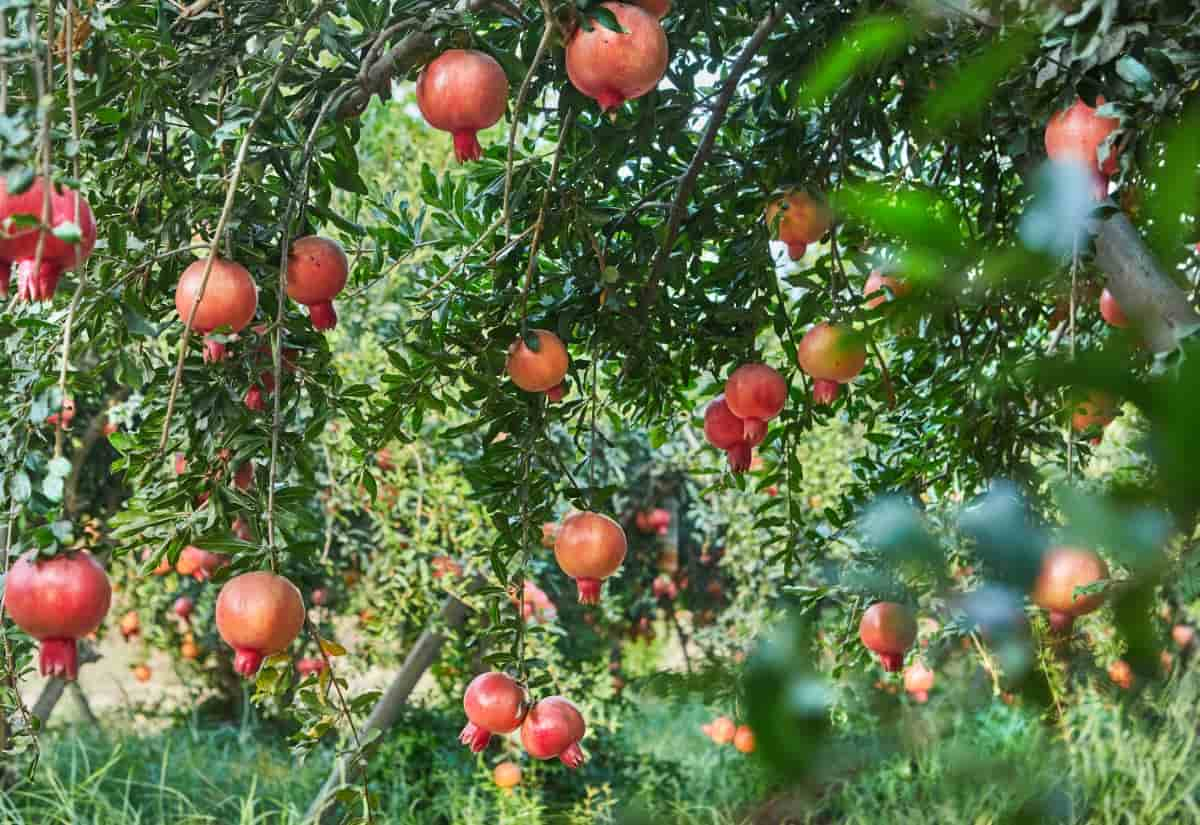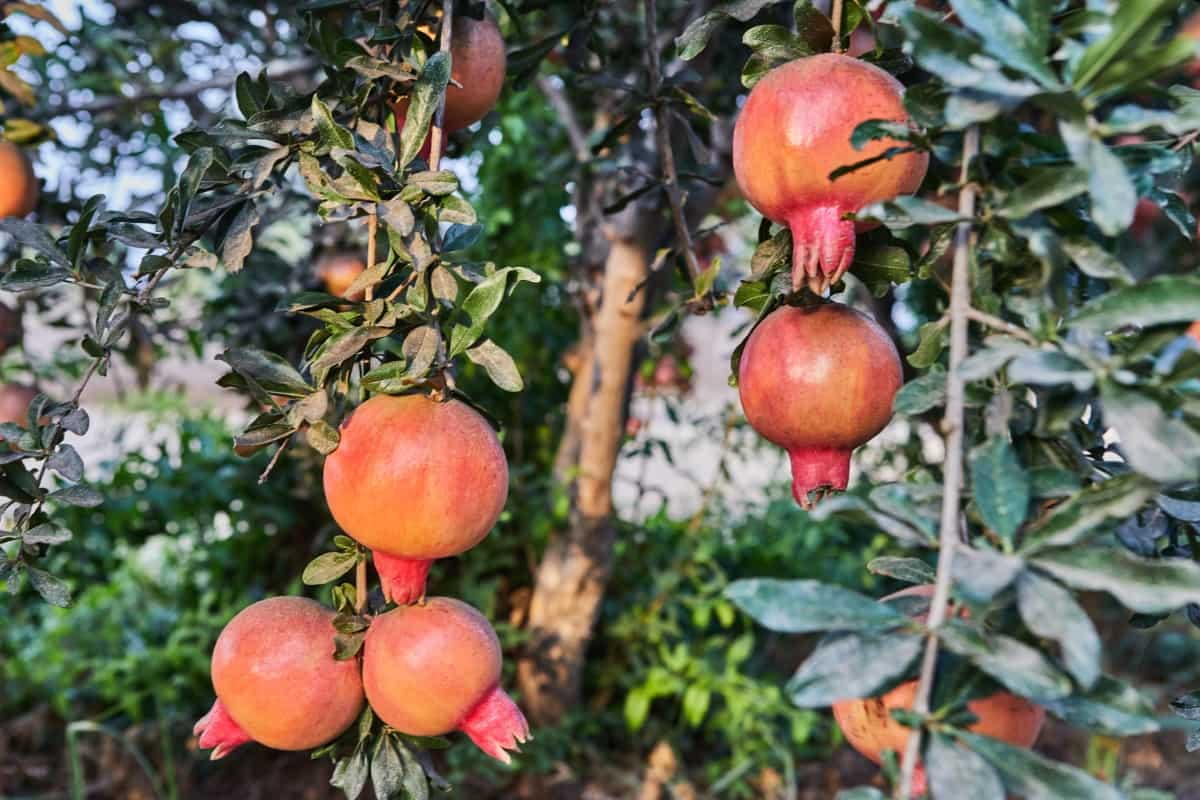The Pomegranate (Punica granatum) is a fruit-bearing deciduous shrub in the family Lythraceae, subfamily Punicoideae. Flower drops in Pomegranate trees can be triggered by various reasons, such as unfavorable weather conditions, inadequate pollination, or nutrient deficiencies. The delicate balance required for successful flower retention makes it important to address these issues proactively.

Understanding the Causes of Flower Drop
Flower drop in Pomegranate trees can be frustrating for growers. Understanding the causes behind this phenomenon is important to prevent it from happening. One common reason for flower drop is inadequate pollination, which can occur due to a lack of pollinators or unfavorable weather conditions during bloom time.
Another factor contributing to flower drop is stress on the tree, such as water stress or nutrient deficiencies. Pomegranate trees require consistent watering and proper fertilization to support healthy flower development. Additionally, extreme temperatures or sudden fluctuations can also lead to flowers dropping prematurely. It’s essential to ensure that Pomegranate trees are planted in well-draining soil.
Choosing the Right Variety to Reduce Flower Drop
Different Pomegranate varieties have varying levels of susceptibility to flower drop based on factors like climate and soil conditions. One popular choice is the ‘Wonderful’ variety, known for its high fruit yield and resistance to flower dropping. ‘Haku Botan’ is another excellent option with beautiful red flowers that are less likely to fall prematurely.
For those looking for a sweeter taste, ‘Parfianka’ is a great choice that also tends to retain its flowers well. Alternatively, if you prefer smaller fruits but want good flower retention, consider the ‘Ambrosia’ variety. By carefully selecting the right Pomegranate variety for your specific growing conditions, you can minimize the risk of flower drops and ensure a successful harvest season.
Soil Preparation and Management for Healthy Trees
Start by choosing well-draining soil rich in organic matter. Before planting, ensure the soil pH is between 5.5 and 7 for optimal growth. Regularly testing the soil can help you adjust nutrient levels accordingly. Consider adding aged manure to improve soil structure and fertility. Proper mulching around the tree base can help to regulate temperature fluctuations in the root zone.
In case you missed it: Growing Pomegranate In The Backyard

Mulch also helps suppress weed growth, which can compete with your Pomegranate tree for nutrients. Regularly aerating the soil will promote better circulation of air, water, and nutrients to support healthy tree growth.
Optimal Irrigation Practices to Prevent Flower Drop
Proper irrigation is crucial for Pomegranate trees to prevent flower drop. Overwatering the Pomegranate tree can lead to root rot, while underwatering can stress the Pomegranate tree and cause flowers to fall prematurely. Finding the right balance is key. During hot weather or periods of drought, it’s essential to water deeply but infrequently. This helps promote deep root growth and ensures that the tree has access to water during dry spells.
Mulching around the tree base can help retain soil moisture, reducing the watering frequency needed. Organic mulches also provide additional nutrients as they break down. Consider investing in drip irrigation for efficient and targeted watering. This method delivers water to the roots, minimizing surface evaporation and runoff. Monitor soil moisture regularly by checking several inches below the surface. Adjust your watering according to weather conditions and plant needs for optimal results.
Nutrient Management: Ensuring Balanced Fertilization
Nutrient management is crucial for Pomegranate trees to thrive and avoid flower drops. Ensuring balanced fertilization provides the necessary elements for healthy growth. Nitrogen, phosphorus, and potassium are essential nutrients needed in the right amounts. Too much or too little can lead to flower drop issues. Regular soil testing helps determine nutrient deficiencies accurately.
In case you missed it: Best Fertilizer for Pomegranate Tree: Homemade, Natural, Organic, and Compost Manure

Organic fertilizers can also enhance soil fertility naturally without causing harm from excessive chemical inputs. Applying fertilizers at the correct times during the growing season supports optimal tree health and flower production. Remember, striking a balance with nutrient management not only prevents flower drops but promotes overall tree vitality for abundant harvests year after year.
Pruning Techniques to Promote Flower Retention
Pruning plays a crucial role in promoting flower retention in Pomegranate trees. When done correctly, pruning helps maintain the tree’s shape and health, allowing sunlight to reach all parts of the plant. Start by removing dead or diseased branches using clean tools to prevent any spread of infections. Focus on thinning out overcrowded areas within the canopy to improve air circulation and reduce competition among branches for nutrients.
Avoid heavy pruning during the flowering season, as it can disrupt bud development. Instead, plan your pruning schedule during dormancy or after fruit harvest for optimal results. Regularly inspect your tree’s structure and make strategic cuts to promote new growth and abundant blossoms each season.
Pest and Disease Control for Healthy Blossoms
Like all plants, Pomegranate trees are susceptible to several pests that can affect the health of their blossoms. Some common pests that may target Pomegranate trees include aphids, whiteflies, and thrips. These pests can damage the Pomegranate plant’s sap or transmit diseases. To combat these pests, it’s essential to inspect your Pomegranate trees regularly for signs of infestation. Applying beneficial insects can help keep pest populations in check naturally without the need for harsh chemicals.
In case you missed it: How to Increase Pomegranate Fruit Size: Fruit Size Management for Getting Bigger Pomegranate Fruits

In terms of diseases, Pomegranate trees may be at risk of fungal infections such as powdery mildew or bacterial blight. Proper sanitation practices and ensuring good air circulation around the Pomegranate tree can help prevent these issues from arising. If you notice any symptoms of pest infestations or diseases on your Pomegranate tree, prompt action is crucial to protect the health of your blossoms and fruit yield.
Protecting Trees from Extreme Conditions
As Pomegranate trees are susceptible to extreme conditions, it’s crucial to protect against adverse weather. Harsh winds can damage delicate blossoms and young fruit, so consider planting windbreaks or creating barriers with fencing. In hot climates, shading the trees during peak sun hours can prevent stress and sunburn on leaves.
During frosty nights, cover your trees with frost cloth or blankets to shield them from freezing temperatures. Mulching around the tree base helps regulate soil temperature and retains moisture during drought periods. Proper watering is essential – deep watering less frequently is better than frequent shallow watering.
In regions prone to storms, securing branches with stakes can prevent breakage from heavy rainfall or strong winds. Regularly inspect your Pomegranate trees for any signs of damage and address issues promptly to ensure their resilience against extreme conditions. Applying these preventative measures can significantly reduce flower drops in Pomegranate trees, ultimately leading to healthier blossoms and a more bountiful harvest.
- Best Liquid Fertilizer for Flowering Plants
- How to Set Up an Efficient Watering System for Home Garden
- How to Mulch Tulip Bulbs: Expert Tips Best Tulip Blooms
- Common Problems with Potted Figs and How to Solve Them
- How to Prevent Flower Drops in Pomegranate Trees: Effective Tips
- How to Boost Ridge Gourd Flowering and Yield: A Beginner’s Guide
- Effective Pollination Techniques for Maximizing Gourds Yield
- Composting Techniques for Manure in Home Gardens
- A Step-by-Step Guide on Propagation Techniques for Jasmine Plants